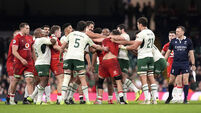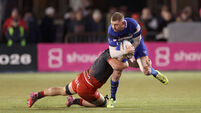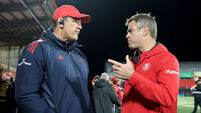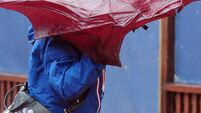Training, a war game for the Beserkers
A crowd of over 400, many of them coaches, gathered in Woodleigh Park to watch the New Zealanders train and were astounded by what they witnessed.
Players split into groups on four corners and embarked on a bewildering series of crossover drills. It was a blur of sound and movement, not a ball was put down, not a pass went astray. Training would never be the same again.















